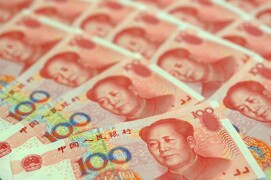The Chinese yuan enjoyed a great start to the trading week, but the currency quickly pared its gains on concerns over escalating trade tensions with the US. The trade fallout is also impacting the equities market as the widespread selloff are sending stocks, especially small-cap stocks, tumbling.
On Friday, the Chinese government warned that it would slap more tariffs, ranging from 5% to 25%, on $60 billion in US goods. This would be in addition to the levies on $50 billion in goods entering China from the US, including airplanes, electronics, and textiles. The announcement has many investors concerned that the retaliation between the worldâs two biggest economies is only intensifying.
Just prior to the yuanâs decline on Monday, the Peopleâs Bank of China (PBOC) made an adjustment to forward foreign exchange risk reserve requirement ratios. The central bank adopted a 20% reserve requirement ratio on banks for forward forex trading, a measure that was eliminated in September 2017. The PBOC defended the move, explaining that it was not meant to control capital but rather it is aimed to prevent macro financial risks and to promote responsible operation of financial institutions.
[The PBOC will] enhance monitoring and make counter-cyclical adjustments in accordance with the development of the situation to keep the forex market steady and the yuan’s exchange rate basically stable at a reasonable and balanced level.
Analysts anticipate the yuan to slide even further, pointing to the Federal Reserve raising interest rates, a sluggish Beijing economy, worsening US-China trade relations, and rising debt levels. The yuan might also fall against other currencies, especially as many central banks begin to unwind their accommodative monetary policies and normalize rates, like the Bank of England, which announced a rate hike last week.
With the yuan expected to depreciate for the rest of 2018, and perhaps into 2019, many are worried that there will be a mass exodus of capital. But financial experts note that a lower currency might allow the national economy to experience a restart.
Officials appear to not want to take a wait-and-see approach. In July, the federal government announced it was intervening into the economy again by launching a series of stimulus efforts. Some of these measures will include increasing infrastructure spending, boosting bank lending, and issuing special municipal bonds.
The USD/CNY currency pair advanced 0.37% to 6.8558, from an opening of 6.8306, at 16:52 GMT. The EUR/CNY swelled 0.32% to 7.9256, from an opening of 7.9005.
If you have any questions, comments or opinions regarding the Chinese Yuan,
feel free to post them using the commentary form below.
